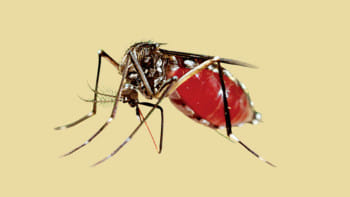Sylhet canals face existential threat

Legend has it that famous landlord Hason Raja Chowdhury used to arrive in Sylhet on his beautifully decorated bojra, a traditional type of boat, which would glide with ease from the Surma River via a sublime canal to dock right in front of his town house. Hason Raja died in 1922 and within a century Sylhet's canals are also dying, due to embankment grabbing, mismanagement and the dumping of garbage.
According to Sylhet City Corporation, around 26 canals, locally known as “chhora”, connect the city's hilly hinterland with the Surma river. In total the urban canal system is said to reach 96 kilometres in length, with 13 major canals accounting for 76 kilometres of that length. Traditionally, these canals were an integral part of the city's drainage system and also served as a water storage asset.
“There was a time when the city's canals were clean and during the rainy season people used to catch fish there,” says Ashraful Kabir, coordinator of environmental organisation Bhoomishontan Bangladesh. “Nowadays most are not more than a repository for garbage. The waters are polluted. The canals are ecologically devastated.”

In recent years, Sylhet City Corporation has implemented plans to protect the canals, but according to local environmentalists the results are questionable. One project at a cost of Tk 11 crore was launched in 2009 and extended with an additional budget of Tk 20 crore in 2013.
The implementation of a second project worth over Tk 236 crore and sanctioned by the Executive Committee of the National Economic Council (Ecnec), commenced last January. It involves the construction of 27 kilometres of retaining wall, 5 kilometres of u-type drains, 13 box culverts and 3.5 kilometres of walkway. This project has raised eyebrows among environmentalists who fear that the walkways, culverts and drains will effectively destroy the canals.
Indeed the city corporation has already constructed a box culvert in conjunction with a walkway in Mongolichhora, from Mirer Moydan to West Chowhatta at a cost of Tk 6 crore, and the construction of another walkway in Jallarkhal from Jallarpar to Taltala at a cost of Tk 4 crore is underway.
“The box culverts and walls alongside the canals are effectively an existential threat,” says Ashraful. “These canals have traditionally had natural banks and concrete walls can serve to block them, especially if people continue to dump garbage there.”
“The denizens of Sylhet have been using the canals to dump waste for decades,” says Faruk Mahmud Chowdhury, president of Sylhet chapter of Shushashoner Jonno Nagorik (SHUJAN), a civil society platform.
“Garbage dumping has become a serious threat to the city's ecology. Along with illegal land grabbing of canal embankments, the situation is alarming.” Faruk believes an expert urban developer at the city corporation is urgently needed in order to effectively coordinate the corporation's development work with a view to properly preserving the canals.

A 2015 study approved of by the Ecnec and undertaken by a team led by Professor Jahir Bin Alam from Shahjalal University of Science and Technology on how to protect the canals noted 1,054 instances of land grabbing along the canals' embankments.
“The study included a recommendation that the corporation not build any type of box drain,” says the professor, “but they are constructing them anyway. If a walkway is needed, it must be ensured that it is not to the detriment of canal connectivity. Besides, the walkways should not be allowed to undermine the cleanliness of the canal environment.”
The corporation's Chief Executive Officer Enamul Habib, meanwhile, says that all steps have been taken to protect the canals with proper planning; and the continued existence of the canal system is not threatened.
“The box culverts will not be harmful as the water flow in the canals will still be natural, and we have included measures to ensure cleanliness,” he says. “Our prime target has been to combat land grabbing and to keep the canals free of garbage. All of our plans have followed the advice of experts.”



 For all latest news, follow The Daily Star's Google News channel.
For all latest news, follow The Daily Star's Google News channel. 



Comments